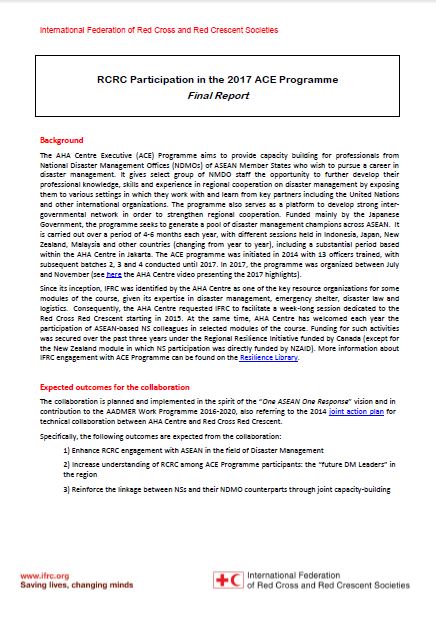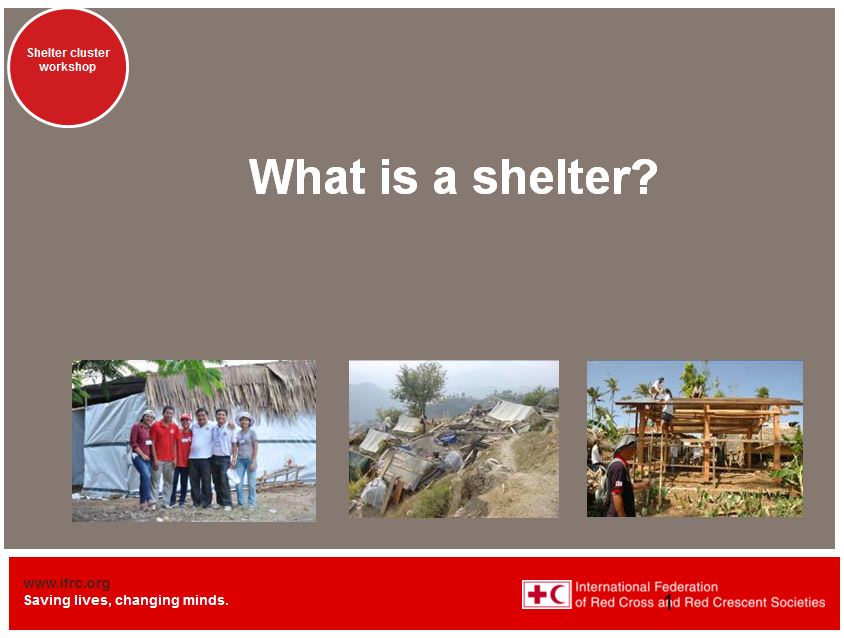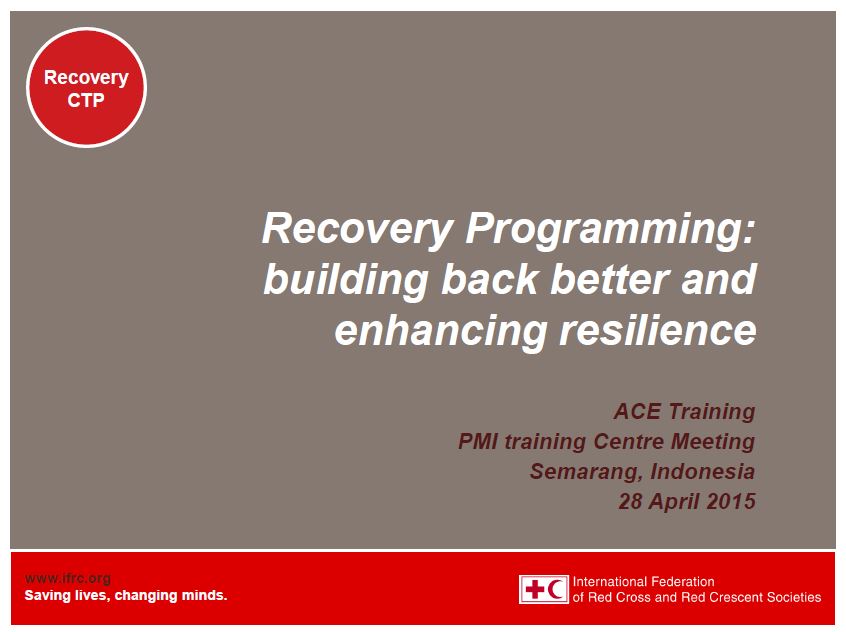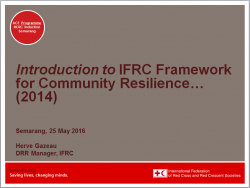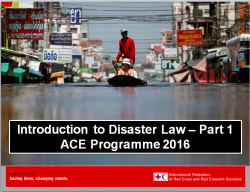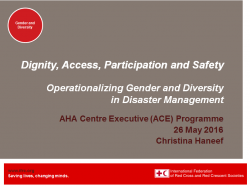AHA Centre Executive (ACE) Programme 2018 Red Cross Red Crescent Induction | 20-24 August 2018 | Jakarta, Indonesia
Introduction
The AHA Centre Executive (ACE) Programme was established as part of the AHA Centre’s ambition to build a disaster-resilient region, through the vision of the ‘One ASEAN One Response’. Since it was launched in 2014, 62 officers from the ten ASEAN Member States have been trained. After graduating from ACE, the ACE alumni continue to engage in various roles in the area of disaster management as well as in responding to emergencies in the ASEAN region. Some graduates have been promoted into higher leadership positions within their respective National Disaster Management Organisations. Considering the ACE Programme’s effectiveness and relevance to support the vision, the AHA Centre continues to invite talented individuals from the ASEAN Member States to join ACE, in order to improve ASEAN’s speed, scale and solidarity in responding to crises and emergencies.
ACE Programme Description
The ACE Programme aims at developing the future leaders of ASEAN. The programme will strengthen the operationalisation of One ASEAN One Response commitment through building the capacities of the participants in the areas of disaster management and humanitarian assistance operations. It is is designed as a training development continuum, with long-term emphasis on building the four ACE Professional Qualities:
- ACE Professional Quality 1. ACE graduate is sought as an expert in humanitarian assistance, both nationally and in the ASEAN region.
- ACE Professional Quality 2. ACE graduate is committed to support the ASEAN’s coordination mechanisms and operationalise One ASEAN One Response through involvement of various relevant stakeholders.
- ACE Professional Quality 3. ACE graduate is result oriented
- ACE Professional Quality 4. ACE graduate is an effective leader
The learning programme combines various adult learning methodologies: online courses, classroom sessions, experiential challenges, case study analysis, individual and team projects, and real-life simulations. The participants are also expected to allocate two hours a day for reading the materials prior to joining the session on the following day, over the 18-week programme duration. In addition, the participants will engage throughout the programme by sharing tasks related to class arrangement, such as: ice breaking, meal/travel arrangement, etc.
Supporting documents:
Go to this link for more interactive information and to view the reading list
![]()
What is a shelter?
Purpose:
The powerpoint presentation was delivered in AHA Center of Excellence (ACE) Programme in 2015, to the members of National Disaster Management Offices of ASEAN State members. AHA Center stands for ASEAN Coordinating Centre for Humanitarian Assistance.
The presentation covers shelter definition, things to consider, shelter cluster: coordination, challenges, functions, roles, activities.
Overview:
The presentation highlights Red Cross and Red Crescent National Societies approach:
- Red Cross and Red Crescent National Societies are usually the first responders after a disaster delivering emergency relief – food, Non-food items (NFI) and first aid support.
- As part of the emergency relief National Societies implement a wide range shelter responses including tents, tarpaulins and household NFI.
- Often National Societies are also part of longer term recovery programmes which include repairing and rebuilding permanent houses.
The presentation also describes the role IFRC takes as Shelter Cluster “convener”, its objectives, functions and coordination.
Usage: Guidance for implementation
Audience: National Society staff
![]()
Recovery Programming: building back better and enhancing resilience
Purpose:
The powerpoint presentation was delivered in ASEAN Centre of Excellence (ACE) Programme in 2015, to the members of National Disaster Management Offices of ASEAN State members. The presentation aims to explain about recovery programming by:
- Describing the concepts and key strategic issues of recovery.
- Highlighting recovery examples from Indonesia and discuss other examples in the South East Asia.
- Presenting tools for developing operational strategies and designing recovery interventions.
Overview:
The presentation features IFRC’s approach in recovery, namely:
- Participation of disaster-affected women, men, girls and boys, who have a right to determine their own future.
- Inclusive participation with equal involvement of members of the community regardless of age, sex, ethnicity & wealth.
- Being accountable to the affected communities, ensuring that affected populations can influence and participate in decision making concerning the operation.
- Doing no harm either socially, economically or environmentally.
- Being timely and starting early to support and complement relief activities whenever possible.
Usage: Guidance for implementation
Audience: National Society staffs
See also: IFRC Recovery Programming Guidance 2012
![]()
IFRC and Community Resilience – a presentation for ACE Programme
Purpose:
Overview:
Usage: Training
Audience: Technical staff, Volunteers
![]()
Introduction to Disaster Law ACE Programme 2016
Purpose:
Overview:
Usage: Training
Audience: Technical staff, Volunteers
For related documents, click here: Part 2, size 7 MB
![]()
Gender and Diversity in Disaster Management ACE Programme 2016
Purpose:
Overview:
Usage: Guidance for project implementation
Audience: Technical staff
![]()


